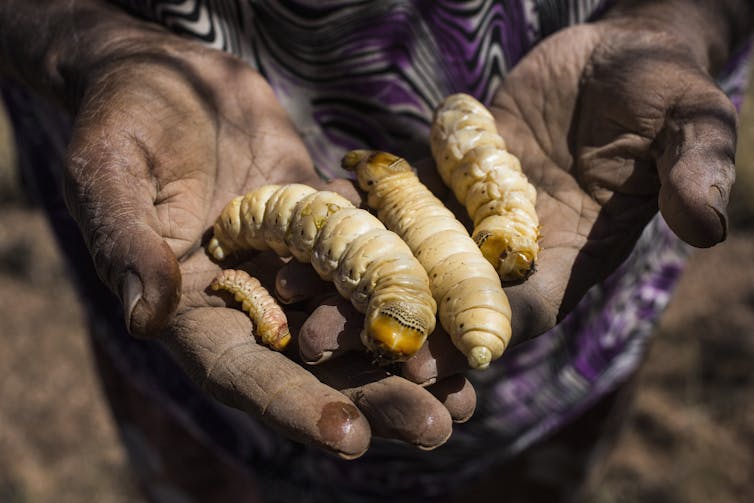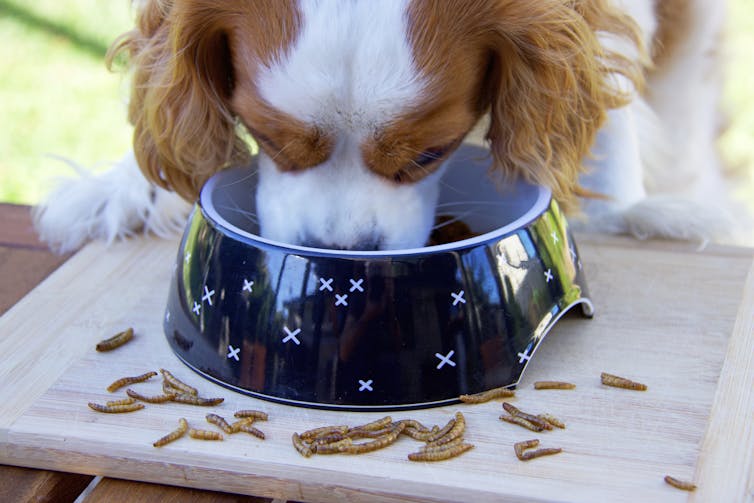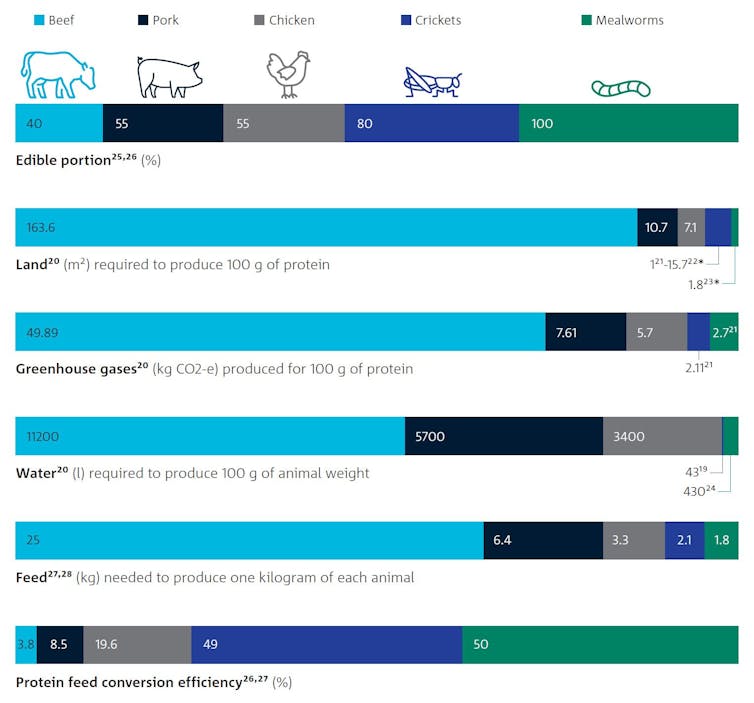4 reasons insects could be a staple in Aussie diets, from zesty tree ants to peanut-buttery bogong moths
- Written by Bryan Lessard, Postdoctoral Research Fellow, CSIRO
With the global population predicted to reach 9.7 billion by 2050, one of the biggest challenges in our lifetimes will be securing enough food for everyone.
We have only finite land and water resources, and climate change, environmentally harmful practises and emerging diseases threaten supply chains.
One way to deal with this is to turn to our insect friends. But don’t baulk — more than two billion people from 130 countries already eat insects. Many Australians already do, too, in the form of natural red food colouring made from the cochineal bug, or the 5% of peanut butter that’s legally allowed to contain insect fragments.
Today, we’ve taken a leap towards bringing insects into mainstream Australian diets, with the launch of CSIRO’s Edible Insects Industry Roadmap. It carves out a comprehensive plan exploring the challenges and opportunities for Australia to become a player in a global industry worth A$1.4 billion by 2023.
The roadmap provides a handy framework for anyone interested in getting a slice of the cricket pie, including new insect start-ups, farmers, food producers, researchers, policy makers and First Nations enterprises. To unlock the farming potential of Australia’s native insect species, we need to form new collaborations, co-develop First Nations-owned initiatives, and conduct more research.
CSIRO launches Australia’s first edible insects roadmap.By becoming braver in our food choices and incorporating insects into our diet, we can lower our environmental footprint, improve our health and be more connected to our land and culture. We bet you, your friends and pets will really get a kick out of it.
So here are four reasons why you should throw another insect on the barbie. Go ahead, we dare you!
1. Australia has a long tradition of eating insects
We have a growing appetite for eating insects. A report from 2006 found 20% of surveyed Australians say they’re keen to eat a witjuti grub (sometimes spelled witchetty grub).
Read more: Eating insects has long made sense in Africa. The world must catch up
After all, First Nations Australians have been eating insects for tens of thousands of years, including iconic native species such as witjuti grubs that taste like nutty scrambled eggs, bogong moths that taste like peanut butter, or zesty lime green tree ants.
These are just some of the 60 native edible insect species recorded in Australia.
 Edible insects are celebrated and traditionally eaten by many First Nations Peoples in Australia.
Getty Images
Edible insects are celebrated and traditionally eaten by many First Nations Peoples in Australia.
Getty Images
First Nations-owned and -led enterprises are essential to transform our native insect species into new culturally celebrated and delicious Australian-branded foods.
We need to guarantee First Nations intellectual property is protected and benefits are shared to ensure an inclusive edible insect industry.
2. Insects can help improve our health
Edible insects are not only tasty, but also are a great source of high-quality protein, omega-3 fatty acids, iron, zinc, folic acid and vitamins B12, C and E.
Recent studies overseas have shown eating edible insects — such as silkworms, wax moth caterpillars and mealworms — can improve gut health, blood pressure, and reduce blood glucose levels.
 Edible insects are high in protein, vitamins and other micronutrients that could improve our health.
B. Ceko & B. Lessard
Edible insects are high in protein, vitamins and other micronutrients that could improve our health.
B. Ceko & B. Lessard
More research is needed to identify species and determine the nutritional profiles of our native insects to see which ones we should be eating to maximise their benefits for human health.
(Sorry to bug-curious people with shellfish allergies, but insects are related to crustaceans and may cause similar allergic reactions).
3. Edible insect foods are already available
This might seem like a food of the future, but edible insect products are already available to buy in some Australian supermarkets.
Aussie start-ups and insect farmers working with the Insect Protein Association of Australia are farming insects and turning them into new edible products. You can even get your own insect nutritionist to help you on your edible insect journey.
 Pets love having a delicious and more sustainable food powered by edible insects.
Bryan Lessard, Author provided
Pets love having a delicious and more sustainable food powered by edible insects.
Bryan Lessard, Author provided
If you’re feeling curious, why not try some smoked cricket and dark roasted peanut butter, and make your way up to making delicious nachos with cricket corn chips or spaghetti with cricket pasta? Perhaps wash it down with some zesty lime green tree ant-infused gin.
And when you’re feeling more adventurous, take your baking to the next level by enriching your muffins, breads or pie crusts with high protein cricket powder.
What about doggo? Try feeding your beloved pet a more sustainable pet food made from roasted black soldier flies or mealworms.
4. Farming insects is better for the environment
Compared to conventionally farmed animals like beef, pork and chicken, insects produce fewer greenhouse gases because they don’t poop nearly as much and don’t usually ferment food in their guts that produces methane (only cockroaches and termites can produce methane in this way).
They also produce minimal waste, as 80 to 100% of the animal is eaten. Even the waste from the insects (called frass) can be turned into nutrient-rich fertilisers great for the garden.
 Insects require minimal land, water and feed to produce large quantities of high-value protein.
CSIRO, Author provided
Insects require minimal land, water and feed to produce large quantities of high-value protein.
CSIRO, Author provided
What’s more, Australian insect farmers are reducing the carbon footprint of transportation by developing urban mini farms, allowing sustainable protein to be produced closer to you. And insects may one day help farmers by supplementing farm animal feed in times of drought.
By creating new collaborations among First Nations peoples, researchers, insect farmers and policy makers, Australia can tap into its native insects to create new delicious, healthy and sustainable insect-based foods.
Read more: Insects, seaweed and lab-grown meat could be the foods of the future
Authors: Bryan Lessard, Postdoctoral Research Fellow, CSIRO





